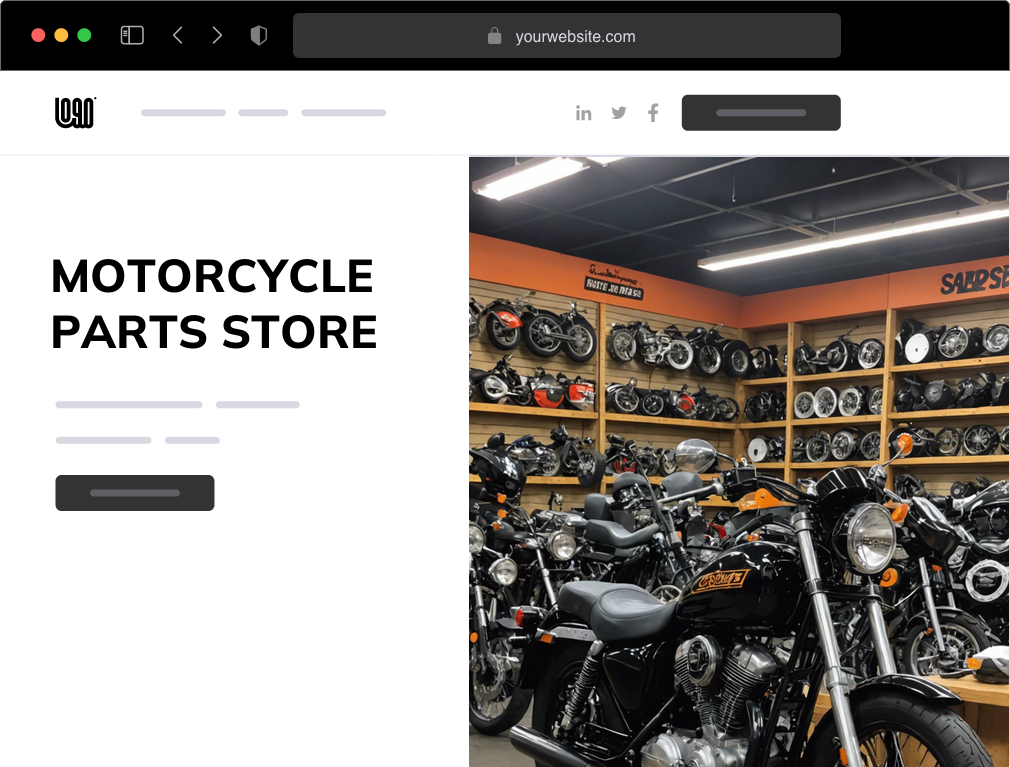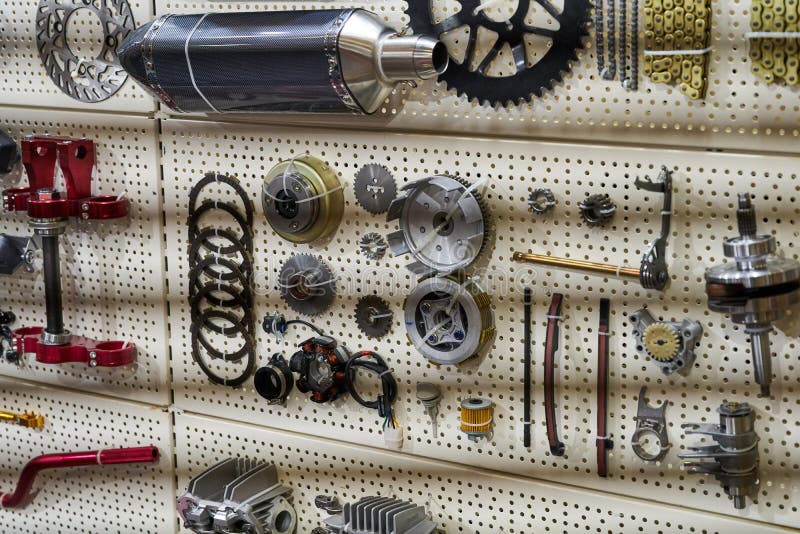Essential Motorcycle Parts NZ for Peak Performance and Safety And Security
Essential Motorcycle Parts NZ for Peak Performance and Safety And Security
Blog Article
Recognizing the Crucial Parts of a Bike: A Comprehensive Overview for Fanatics
For motorbike lovers looking to raise their riding experience and guarantee their bikes run efficiently, understanding the crucial components of a motorcycle is paramount. Each component, from the engine's detailed functions to the crucial function of the braking mechanisms, not only influences performance however also security and comfort.
Engine Components

The camshaft plays a critical role in controlling the timing of the engine's shutoffs, making sure the accurate opening and closing necessary for effective gas and air consumption, in addition to exhaust expulsion. This timing is important to preserving ideal engine efficiency and performance. Furthermore, the carburetor or fuel injection system, depending upon the motorcycle design, is accountable for mixing air with gas in the proper ratio for combustion.
The air conditioning system, either air or liquid-based, works to maintain the engine's temperature level within operational limits, avoiding getting too hot and making sure long life - motox parts nz. Each element, thoroughly made and integrated, contributes to the smooth procedure of the engine, specifying the bike's power output and overall performance
Transmission System
Indispensable to the bike's functionality, the transmission system ensures efficient power transfer from the engine to the wheels. This system makes up numerous important parts, consisting of the clutch, gearbox, and last drive, each playing an important role in equating the engine's power right into activity. The clutch, usually run by a hand lever, offers to disengage the engine and engage from the transmission, enabling smooth gear modifications and regulated velocity.
The transmission, often described as the transmission appropriate, includes a set of equipments that motorcyclists can by hand move through to readjust the bike's rate and torque output. These equipments are prepared in a sequence that allows the bike to increase efficiently and preserve optimum engine performance throughout various speeds. A lot of motorcycles use a consecutive transmission, calling for the biker to change gears in an established order.
Braking Mechanisms
While comprehending the transmission system is vital to harnessing a motorcycle's power, similarly vital is the capability to regulate and quit that power successfully, which is where stopping devices enter play. Brakes are critical for safety and security and performance, giving the rider with the needed control to browse various surfaces and problems. Usually, bikes include two kinds of stopping systems: disc brakes and drum brakes.
Disc brakes are more widespread in contemporary motorbikes due to their premium performance. They include a brake disc, caliper, and pads. When triggered, the caliper squeezes the brake pads versus the spinning disc, transforming kinetic energy right into heat, therefore slowing down the wheel. This system provides far better warmth dissipation, regular performance, and enhanced quiting power, specifically in wet conditions.
On the other hand, drum brakes, though much less common, are still located in some motorcycles. They work by pushing brake shoes against the inner surface of a drum attached to the wheel. While typically much less reliable in warm dissipation and stopping power, drum brakes are easier and extra affordable.
Recognizing these braking systems' subtleties permits riders to maintain their bikes effectively and value the engineering that makes sure risk-free and reliable stopping.
Suspension and Steering
Suspension and steering systems are important elements that dramatically influence a motorbike's handling and experience comfort. The shock absorber, containing forks at the front and shock absorbers at the back, soaks up roadway abnormalities, enhancing stability and control. Front forks, commonly telescopic or upside down, compress and rebound to alleviate effects, while visit this page rear shock absorbers maintain tire call with the road, crucial for traction and safety and security.
Guiding, centered around the handlebars, attaches the cyclist to the bike's directional control. The steering head bearings make certain smooth procedure, permitting exact maneuverability. Appropriate alignment and upkeep of these bearings are critical for predictable steering reaction and lowering rider tiredness.
The suspension's adjustability is another important aspect; preload, damping, and rebound setups permit modification to match different riding conditions and styles. This adaptability is vital for enhancing efficiency, whether browsing urban roads or dealing with tough tracks. Innovations like digital suspension systems offer real-time adjustments, boosting experience quality across diverse surfaces.

Electrical Systems
After ensuring a smooth and regulated adventure best modular helmet 2022 through reliable suspension and guiding systems, focus turns to the electric systems, a pivotal element of contemporary motorcycles. These systems play a critical role not just in beginning the engine however also in powering different parts that enhance the functionality and security of the bike.
At the heart of a motorcycle's electrical system is the battery, which stores electric energy required for beginning the engine and powering supporting systems - mx parts nz. The generator or generator, coupled with the rectifier-regulator, guarantees the battery stays billed while the motorcycle is in operation, converting mechanical power into electric energy and maintaining voltage levels
The ignition system, one more critical component, is liable for firing up the air-fuel combination in the engine's cyndrical tubes. Modern bikes typically make use of an electronic ignition system, using higher performance and dependability contrasted to conventional systems.
Illumination systems, consisting of headlights, tail lights, and indications, are additionally important, ensuring exposure and safety and security for the rider. Extra electronic components such as sensors, control devices, and displays add to innovative attributes like gas shot management, anti-lock stopping systems (ABDOMINAL), and digital control panels, further boosting the riding experience.
Conclusion
An extensive comprehension of a motorcycle's necessary elements, consisting of the engine, transmission system, braking devices, suspension, steering, and electrical systems, is crucial for lovers aiming to maximize security, convenience, and performance. Mastery of these components permits informed decisions relating to upkeep and upgrades, ultimately enhancing the riding experience. By integrating this knowledge, motorcyclists can ensure their motorbikes operate at peak effectiveness and reliability, thus making best use of both satisfaction and longevity of their automobiles.
For motorcycle lovers looking to boost their riding experience and helpful hints guarantee their bikes run efficiently, understanding the important components of a motorbike is extremely important.Essential to the motorbike's performance, the transmission system makes sure efficient power transfer from the engine to the wheels.While recognizing the transmission system is essential to using a motorcycle's power, equally vital is the capability to manage and quit that power effectively, which is where braking mechanisms come right into play. Typically, motorcycles include two types of stopping systems: disc brakes and drum brakes.
A comprehensive comprehension of a motorbike's vital parts, consisting of the engine, transmission system, stopping devices, suspension, steering, and electrical systems, is important for lovers aiming to enhance performance, convenience, and safety and security.
Report this page